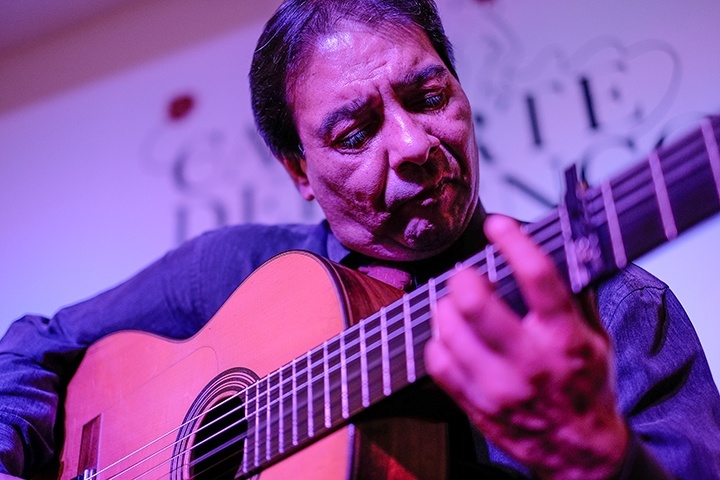Granada flamenco artists (I) Rafalín and los Habichuela dynasty

Granada is not a capital of flamenco only for being in the south of the Iberian Peninsula; it is a neuralgic place of this culture thanks to the artists who grew up here. The Nasrid province of Granada has always had a number of cantaores, bailaroes or guitarists, who ended up triumphing worldly: los Morente, the cantaora Marina Heredia, but also los Habichuela, one of the most famous flamenco dynasty with the greatest impact.
Juan Habichuela, a flamenco legend
Juan Carmona Carmona (Granada, 1933), died in 2016. Although he was not the first of the Habichuela’s lineage – it is said it was his grandfather, Habichuela El Viejo – he is definitely one of those who put the dynasty under the spotlight.
He started as a bailaor but, soon, started playing guitar. It was his thing and he proved it as, in a few time he had gained the respect of the flamenco’s circle: in 1994, he won two prizes: the Compás del Cante award from Fundación Cruzcampo, and the Galardón Calle de Alcalá award on its second edition, from Madrid-born flamenco critics and writers.
Juan developed his carrier and settled as a reference guitarist. He was in New York with Manuela Vargas and played guitar with famous personalities like Manolo Caracol, Marina Heredia and José Mercé. He made Granada and his surname, los Habichuela, worldly famous.
Pepe Habichuela: “Los Habichuela now have a unique signature”
A year ago, José Antonio Carmona Carmona (Granada, 1944), Juan Carmona Carmona’s brother, won a Gold Medal for Merit in the Fine Arts. This was a turning point who turned Pepe Habichuelas, as people call him, into one of the greatest artist in the genre.
In a recent interview published by the daily newspaper Granada Hoy, Pepe said he was born 75 years ago in a cave of Cuesta de Alhacaba hill. He highlighted how flamenco changed and how it became more important. “Now, things are put in their proper place: flamenco is one of the most important music genre of the year”.
Pepe Habichuela, who played guitar in the caves of Sacromonte at the age of 13 when “flamenco artists were completely disregarded” is now very happy to see how people see this music genre nowadays. He then carried on the interview with the journalist Isabel Vargas, highlighting the importance of his dynasty, los Habichuela, in flamenco’s stunning growth: “We, los Habichuelas, created a style with a special way of playing guitar. We have a unique signature.” A signature they achieved through efforts and hard work, of course, “by playing very vigorously and frequently; there were always many people, rounds of applause and many people raising their voice”.
Tribute to Rafael Habichuela
El citado Juan Habichuela fue padre de Juan José Carmona, El Camborio, y Antonio Carmona; ambos formaron parte del popular grupo Ketama de flamenco fusión. Y el linaje de los Habichuela va mucho más allá, con diversos miembros de la familia llevando su nombre por todo el mundo y poniendo el sello Habichuela en diferentes tablaos.
The aforementioned Juan Habichuela is Juan José Carmona (El Camborio), y Antonio Carmona’s father. Both were part of the popular group of flamenco fusion, Ketama. The lineage of los Habichuela goes even further, as several family members proudly bear this surname worldly, bringing the family’s signature to different stages.
Casa del Arte Flamenco worked with artists like Rafael Santiago Gómez, better known as Rafalín Habichuela.
As you can read on his data sheet, – you can also see the other artists’ data- he was born on August 14, 1961 in the cuestas del Albaicín bajo and he is Juan and Luis Habichuela’s nephew, but also Tía Marina Habichuela’s grandson.
Since he started playing guitar at the age of 9, Rafael has been able to play along with cantaores like Carmen Linares, Enrique Morente or José Mercé because, just as he narrates “He is a folk music lover” but also an expert in setting the tone for the cantaor, to give the perfect touch, just as Juan Habichuela himself did.
Rafalín Habichuela now temporary stopped his carrier due to health problems and this is why we will pay tribute to him on January 31 with the presence of artists like Grupo Ketama, Pepe Luis Carmona, Kiki Morente, El Parrón, David de Jacoba, Pedro el Granaíno, Curro Albayzin, Pepe Habichuela, Juan Habichuela nieto, Carlos de Jacoba, Eva la Yerbabuena, La Moneta and many more.
-
Recent Posts
Recent Comments
Archives
- April 2025
- March 2025
- February 2025
- December 2024
- November 2024
- October 2024
- August 2024
- July 2024
- June 2024
- May 2024
- April 2024
- March 2024
- February 2024
- January 2024
- December 2023
- November 2023
- October 2023
- September 2023
- August 2023
- July 2023
- June 2023
- April 2023
- March 2023
- January 2023
- December 2022
- November 2022
- October 2022
- November 2021
- October 2021
- February 2020
- January 2020
- December 2019
- November 2019
- October 2019
- September 2019
- August 2019
- July 2019
- June 2019
- May 2019
- April 2019
- March 2019
- February 2019
- January 2019
- December 2018
- November 2018
- October 2018
- September 2018
- August 2018
- July 2018
- June 2018
- May 2018
- April 2018
- March 2018
- February 2018
- January 2018
- December 2017
- November 2017
- October 2017
- September 2017
- August 2017
- July 2017
- June 2017
- May 2017
- March 2017
- February 2017
- January 2017
- December 2016
- November 2016
- October 2016
- September 2016
Categories
Meta
